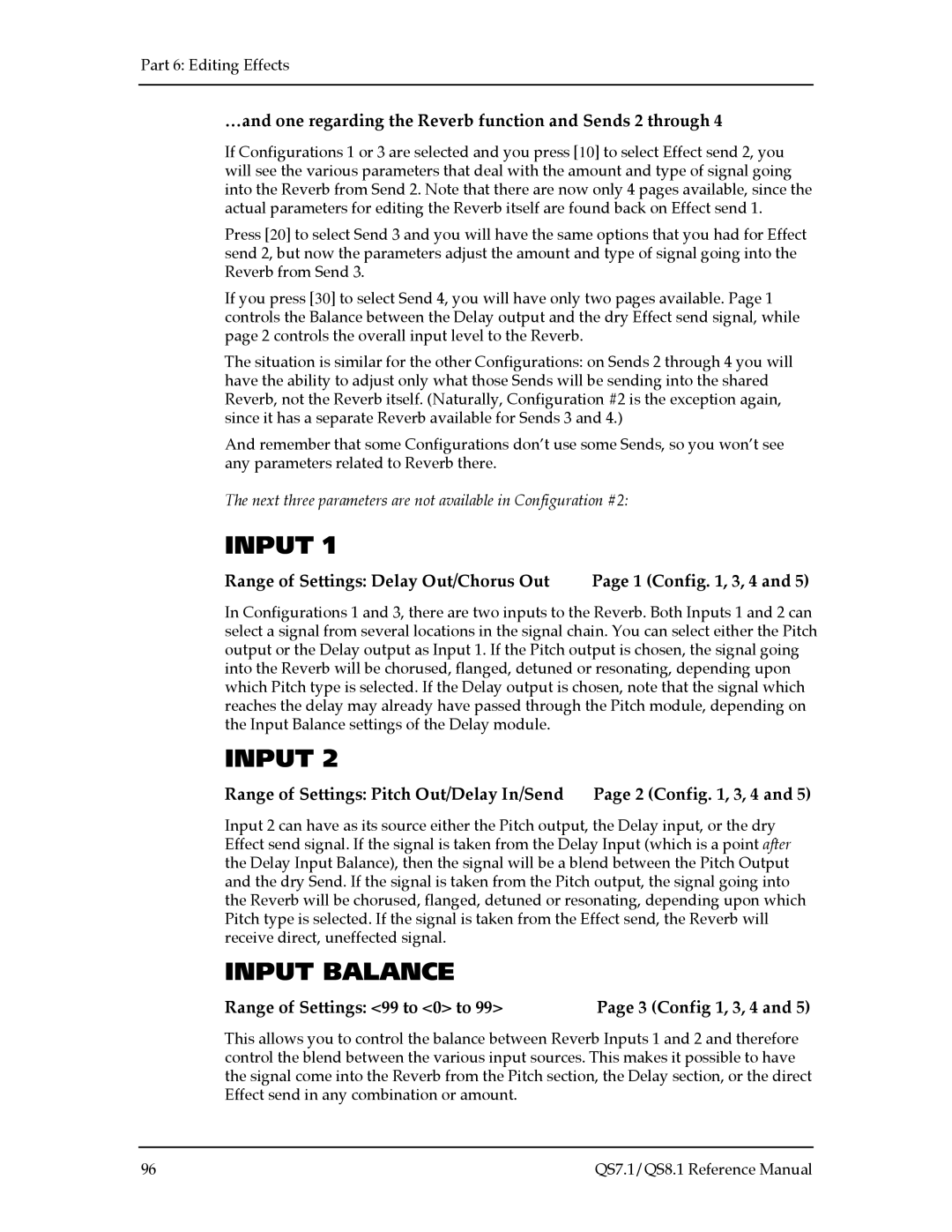
Part 6: Editing Effects
…and one regarding the Reverb function and Sends 2 through 4
If Configurations 1 or 3 are selected and you press [10] to select Effect send 2, you will see the various parameters that deal with the amount and type of signal going into the Reverb from Send 2. Note that there are now only 4 pages available, since the actual parameters for editing the Reverb itself are found back on Effect send 1.
Press [20] to select Send 3 and you will have the same options that you had for Effect send 2, but now the parameters adjust the amount and type of signal going into the Reverb from Send 3.
If you press [30] to select Send 4, you will have only two pages available. Page 1 controls the Balance between the Delay output and the dry Effect send signal, while page 2 controls the overall input level to the Reverb.
The situation is similar for the other Configurations: on Sends 2 through 4 you will have the ability to adjust only what those Sends will be sending into the shared Reverb, not the Reverb itself. (Naturally, Configuration #2 is the exception again, since it has a separate Reverb available for Sends 3 and 4.)
And remember that some Configurations don’t use some Sends, so you won’t see any parameters related to Reverb there.
The next three parameters are not available in Configuration #2:
INPUT 1
Range of Settings: Delay Out/Chorus Out | Page 1 (Config. 1, 3, 4 and 5) |
In Configurations 1 and 3, there are two inputs to the Reverb. Both Inputs 1 and 2 can select a signal from several locations in the signal chain. You can select either the Pitch output or the Delay output as Input 1. If the Pitch output is chosen, the signal going into the Reverb will be chorused, flanged, detuned or resonating, depending upon which Pitch type is selected. If the Delay output is chosen, note that the signal which reaches the delay may already have passed through the Pitch module, depending on the Input Balance settings of the Delay module.
INPUT 2
Range of Settings: Pitch Out/Delay In/Send | Page 2 (Config. 1, 3, 4 and 5) |
Input 2 can have as its source either the Pitch output, the Delay input, or the dry Effect send signal. If the signal is taken from the Delay Input (which is a point after the Delay Input Balance), then the signal will be a blend between the Pitch Output and the dry Send. If the signal is taken from the Pitch output, the signal going into the Reverb will be chorused, flanged, detuned or resonating, depending upon which Pitch type is selected. If the signal is taken from the Effect send, the Reverb will receive direct, uneffected signal.
INPUT BALANCE
Range of Settings: <99 to <0> to 99> | Page 3 (Config 1, 3, 4 and 5) |
This allows you to control the balance between Reverb Inputs 1 and 2 and therefore control the blend between the various input sources. This makes it possible to have the signal come into the Reverb from the Pitch section, the Delay section, or the direct Effect send in any combination or amount.
96 | QS7.1/QS8.1 Reference Manual |
